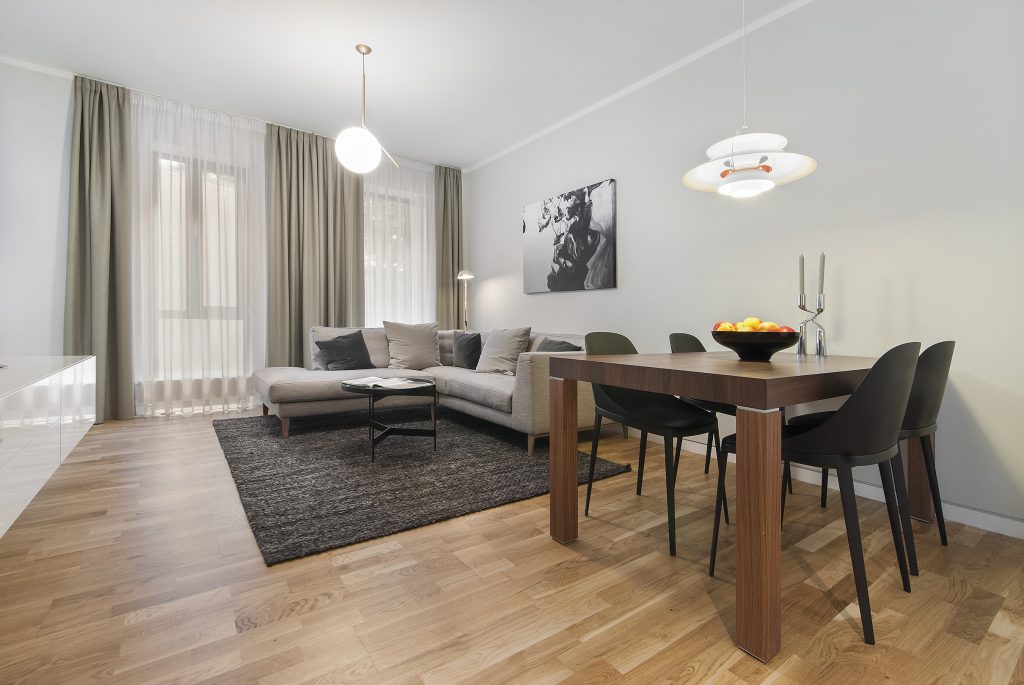Local customers are the driving force for the premium residential market development in Riga; the growth trend will continue this year as well
The highest comfort level, or premium, properties are becoming more accessible to the local customer, who mainly chose existing houses in the Riga Center and often – as the objects for investing their funds. Thus, local customers become as the main power of this the property segment market activity.
The available Riga premium apartment property offer (in the price category from 150 to 300 thousand EUR) exhibits the highest business activity: In 2017, in comparison with previous year, an increase of 10.5% was recorded, with more than 300 transactions totalling over 60 million EUR. Latvia’s economic growth last year was fastest in the past six years, coupled with the increase in salaries and the new Altum program for young professionals allows you to predict the positive trend to continue this year as well.
This point of view, according to collected data, expressed Inese Zaķīte, “Baltic Sotheby’s International Realty” sales consultant.
She explains that the “Baltic Sotheby’s International Realty” premium property segment is divided into four parts: the so-called “affordable premium segment” – estate price group from 150 to 300 thousand EUR, followed by properties priced from 301 to 500 thousand EUR, followed the properties from 500 thousand to a million EUR, and expensive – from a million EUR and more. Tendencies of the last years show that in the premium market the tone is determined by local customers, who mostly choose higher comfort level properties, in the affordable price group from 150 to 300 thousand EUR, mainly apartments in the Centre of Riga.
“If until 2016 the premium property customers ratio was 40:60, the vast majority being non-residents, for several years we have observed a reversing trend, where most customers are local, for whom these properties have become more accessible, and an increasing demand trend is notable. It was boosted by faster economic growth, rising salaries, and the state-supported Altum program. Since in March the new Altum program for young professionals without a transaction amount limit was introduced, we expect that it will further enhance the so called “affordable premium segment” growth,” said I. Zaķīte.
In Riga dominated business residential locations in the highest comfort level apartments in the property segment. From a total of 2017, in the country made 497 premium apartment property transactions, 377 transactions were in Riga for a total amount of more than 91 million EUR.
The most purchased premium apartment properties in the price group from 150 to 300 thousand EUR: last year in this price category we recorded more than 300 transactions totalling over 60 million EUR. In the price category of 301 to 500 thousand EUR, 48 transactions were made totalling over 16 million EUR, in the price category of 500 thousand to a million EUR, last year there were been 9, and above a million EUR – just 3 transactions for Riga premium apartments. Business activity growth in 2017, in the so-called affordable price category, compared with the previous year, has been about 10.5%.
As “Baltic Sotheby’s International Realty” sales consultant Inese Zaķīte explains, in recent years in this property market segment, stability of the growth trend is observed: many owners renovate their properties, offering apartments to buy, alongside the development of new projects. Among Riga premium apartment transactions still the most active area is in the Centre of Riga, in particular the quiet centre: real estate built before the 21st century. However, activity within new projects has been keeping up: demand for these properties has been stable since the beginning of 2015, when on average about half – around 200 – of all the premium apartment transactions in Riga were new properties. Last year, the total of new premium apartment transactions was 38.7 million EUR. One of the most active locations for new projects in Riga in the peripheral centre neighbourhood has been the Skanste neighbourhood, where premium properties are redeemed already at the construction stage.
Stable demand was observed for 2-3 room apartment properties, but lately the demand for larger – 4 – 5 room – premium apartments has increased, which are purchased by larger family, although the property market’s supply is not extensive.
I. Zaķīte commented: “We can see that the market situation is changing as a whole, and certainly changes will also come following this year’s events in the banking sector. Increasingly more customers are exploring the possibility of investing money in premium-class properties with a profit of 3-5% per year, which is more profitable and safer than to keeping one’s funds in a bank deposit.
We observe that the customers very carefully assess where to invest their funds: they weigh the combination compliance of price, liquidity, and quality. With regard to the purchase of real estate, customers have become much more demanding and discerning, because in addition to location, price and apartment layout, they wish to receive information about the construction quality, safety, security, building management and utility costs. Therefore, the projects and properties, offered on the market are becoming higher-quality. Recently we have been actively working with property sellers, explaining the trends and the demand, so the premium segment can offer properties of appropriate quality and price, and to continue development of the segment in a positive direction.”
Expressing the forecasts about development of Riga premium apartments market this year, the “Baltic Sotheby’s International Realty” sales consultant believes that the current activity indicates that trends will continue: the local customer will be the driving force for this market segment, and development will expand. One can forecast changes in the direction of a market price correction, which may be sparked by the recent events in the banking sector. It could certainly be a positive for the local customer, as premium segment properties that locals can afford by taking mortgages with banks or using their savings will become increasingly accessible to the public.
Resource: Premium property market – increasingly accessible for the local customer

